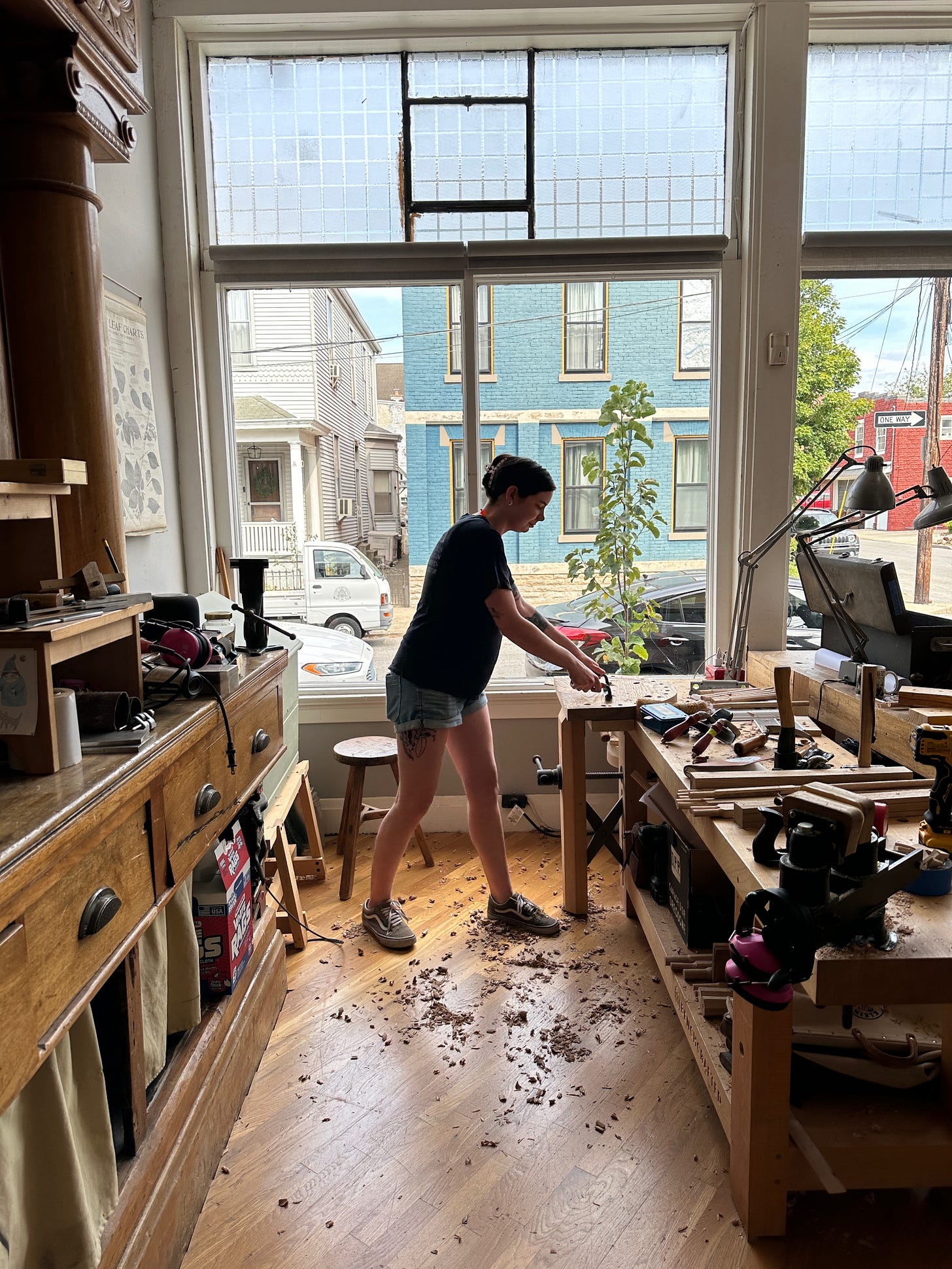“And 100 years is only like a day in fairyland. Or maybe 1,000 years is only like a day. That’s as true, Pauline, as I got it.”
— Peter Flanagan in the film “Henry Glassie: Field Work”
For many years, I’ve tried to explain that one of the features of vernacular furniture is that it’s hard to date.
Show me a Gustav Stickley Morris chair, and I can tell you when it was made within a year or two.
But show me a six-board chest, and I might could give you a 300-year range, depending on the fasteners used to build it.
This is not a new problem.
When I build stick chairs, people ask me what time period they came from. My answer is: This is a Welsh one. This is an Irish one. Over there is a Scottish one.
And when I think about the ladderback chairs of Eastern Kentucky, I don’t think in terms of “this feature came first” and this “feature came next.” Instead, I think about the counties where these details emerged. The chronology is much less important than the very particular ground it sprang from.
This is why there isn’t a sufficient history of vernacular furniture. There isn’t a chronology of its beginning, its “Golden Age” and its decline. And that’s because we are in all three of those ages right now.
So how can we even attempt to understand vernacular pieces? Lucky for us, some big minds have been at work on this problem.
Enter the Glassie
In 2019, Nancy Hiller went to ridiculous lengths to get me in touch with Henry Glassie, a professor emeritus of folklore at the University of Indiana Bloomington.
The only reason I would strongly encourage you to pursue Henry as a resource is that he’s an amazing man, just the kind of person you should have access to – not only for the sake of your project,1 but because he would, I’m certain, be delighted by the work you’re doing.… It’s not that Henry doesn’t want to help people, just that he, like you, has been overwhelmed by time wasters.
I tried. Then the pandemic. Then Nancy died.
And here the chronology falls apart. That’s OK.
In 2016 or so I bought a book about Ola Belle Reed (1916-2002), an Appalachian folk singer whose voice I couldn’t get out of my head. The book came with two CDs filled with unreleased songs by Reed that I played over and again. The book was also fantastic, and it sits on a shelf on my campaign chest, sharing space with (mostly) Kurt Vonnegut novels.
Let’s time shift again.
In April of this year, I drove to the remote town of Ashland, Wisconsin, to shoot photos for Jarrod Dahl’s upcoming book on pole-lathe turning. It was an intense few days of work. And while we were talking, Jarrod recommended I read the book “Global Objects” (2022, Princeton University Press) by Edward S. Cooke Jr.
“It’s academic,” he said. “But I think you’ll like it.”
I devoured it in two days.
I began to reread the book a couple weeks ago, and I got mired in this passage. I know it’s a bit dense, but I promise it’s worth it.
Conditioned by the values of capitalism, Western notions of artistic value are tied to concept, originality, visuality, authorial identity, and economic value rather than function, deft skill, suitability, materiality, anonymous shop production, and cultural value. If we encounter work that exists outside this sort of framework, we often dismiss it as insignificant, merely functional, lacking in imagination, or even primitive. More often this work is relegated to a museum of natural history or an anthropology museum rather than an art museum. Such an act of aesthetic imperialism only reinforces the superiority of the Western canon and its underlying value system. As Henry Glassie reminds us, “No matter how important easel painting is in the late West, it is uncommon in world history. It would be more just, truer to reality, to begin with textiles and ceramics.”
In this assertion Glassie pushes back against a language of distinction and hierarchy that emerged in western Europe only about five hundred years ago.
Henry Glassie. I know that name. And honest-to-God I was thinking that as I pulled on my underwear on Sunday morning. I looked up at the books on top of my campaign chest. One book stood out: “Ola Belle Reed and Southern Mountain Music on the Mason-Dixon Line” by Henry Glassie….
Keep reading with a 7-day free trial
Subscribe to The American Peasant to keep reading this post and get 7 days of free access to the full post archives.



